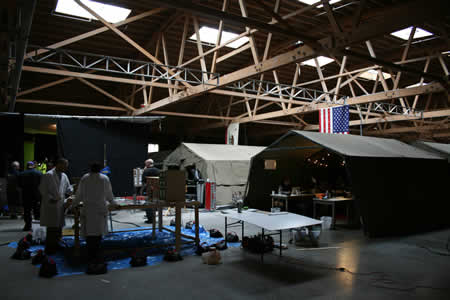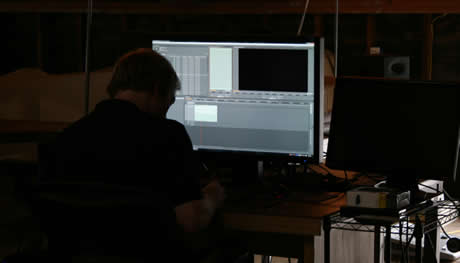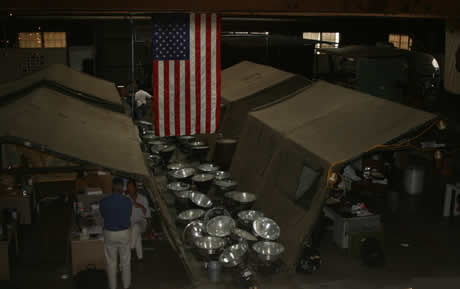 Jacob Rosenberg, a filmmaker, author, and digital technology expert, he developed his passion for video and film as a skateboarder in the early 1990’s, making two of the most acclaimed skateboard videos for the company Plan B. Upon graduating from Emerson College, his thesis film “Silent Rain in the Ninth,” was released on DVD; Rosenberg promptly began directing music videos, commercials and short films.
Jacob Rosenberg, a filmmaker, author, and digital technology expert, he developed his passion for video and film as a skateboarder in the early 1990’s, making two of the most acclaimed skateboard videos for the company Plan B. Upon graduating from Emerson College, his thesis film “Silent Rain in the Ninth,” was released on DVD; Rosenberg promptly began directing music videos, commercials and short films.
Rosenberg connected with fellow directors and Bandito Brothers principals Mike McCoy and Scott Waugh when he served as the Online Editor and Digital Intermediate Supervisor for “Dust to Glory.” That feature utilized an all-digital workflow designed by Rosenberg that used 1080p HD as its Digital Intermediate format, mixing nine different video formats seamlessly and printing the HD edit directly to film. Subsequent to “Dust to Glory,” Rosenberg has contributed his technical knowledge to a number of feature film projects, including “Superman Returns,” Martin Scorsese’s Rolling Stones documentary “Shine a Light,” James Cameron’s “Avatar,” and the acclaimed independent film, “August Evening.”
Since joining Bandito, Rosenberg has directed spot projects for Ford, Harvey Nichols, Kaya Skin Clinic, Kick-n-Go, and gogurt.com; he also has written and directed a short entitled “December Story” which is screening at festivals. Rosenberg is currently directing a feature-length documentary on skateboarder Danny Way.
Bijan Tehrani: can you please tell us a little bit about your company?
Jacob Rosenberg: I am the CTO and one of the director’s of Bandito Brothers. Bandito Brothers started about three and a half years ago in Hollywood. The company was started on the heels  of a film that my partners made called Dust to Glory and I met them during the post-production aspect of them. We did some problem solving after they went through the long process of making that documentary. We immediately got into the commercial business as a full service media company, we did the production, post-production and we did the encoding of the files. We only worked in HD and tried to work digitally as much as possible. We built a very strong commercial division of the company while developing a number of feature length motion picture projects. So we worked commercially with the United States Navy as well as the Air Force and we developed a relationship with them that helped jump start a project on the US Navy SEALs, which we have been working on for the past two years. But the basis of the company is that we have this post-production infrastructure that facilitates the production side of the company that allows us to problem solve and do different things. I remember learning about vertical integration and learning about the different processes of business, we wanted to be a completely vertically integrated production company.
of a film that my partners made called Dust to Glory and I met them during the post-production aspect of them. We did some problem solving after they went through the long process of making that documentary. We immediately got into the commercial business as a full service media company, we did the production, post-production and we did the encoding of the files. We only worked in HD and tried to work digitally as much as possible. We built a very strong commercial division of the company while developing a number of feature length motion picture projects. So we worked commercially with the United States Navy as well as the Air Force and we developed a relationship with them that helped jump start a project on the US Navy SEALs, which we have been working on for the past two years. But the basis of the company is that we have this post-production infrastructure that facilitates the production side of the company that allows us to problem solve and do different things. I remember learning about vertical integration and learning about the different processes of business, we wanted to be a completely vertically integrated production company.
BT: Has the company been involved in mostly feature film productions?
JR: We have a number of feature films in development, but in terms of feature productions we have a relationship that we have been fostering with the United States Navy. So we wrote a script and had a partnership in place with the Navy for the movie. We reached a point where we had to start shooting because Naval Assets were available and we pulled the trigger and starting making the movie. The resources we have here allowed us to edit on a freer basis than say a larger company who has those components. We can shoot and then begin editing immediately in order to quickly show people the work. You don’t have to have millions of dollars to show people your vision in today’s media, we are very much in the spirit of independent filmmakers and independent finance and we are really trying to do something fresh and something new.
 BT: Can you explain your relationship with Hewlett Packard?
BT: Can you explain your relationship with Hewlett Packard?
JR: Before we had any formal relationship with Hewlett Packard, all of our workstations here at the company have been HP workstations. So its one of those funny things where we had their machines and then we started kicking out really good quality work and we decided that we wanted to look for partnerships, these companies rely on feedback from people in the field and people who use their equipment, so we have established a really good relationship with HP where they are sending us the hardware and asking us for our feedback. We recently took our dream color systems on set with us on our movie and that’s a huge deal, to be in production and use a dream color on the field to visually see the work that we were doing. And the dream color gave us what we were looking for.
BT: How much has the new technology in general helped independent filmmakers?
JR: New technologies have sort of a double edged sword, because there is always the time where you are learning about the technology, we always say that we fail upwards. You are learning while you are on the job. You have to be careful when using the new technology because you can get bogged down with problems that you don’t know how to fix. Fortunately with the amount of people that embrace new technology you really have a community of people that are recycling information. We are lucky here where we have the capability to solve most technological problems. Here we have a tech director, Mike McCarthy who is very smart, and he is constantly staying current with anything new. The price point of new technology coming from the name brand manufacturers is consistently great, when we installed our Z series it was like night and day and the improvements were great. So independent filmmakers should know and educate themselves about what their strength is in terms of engaging the new technology.
BT: Do you edit on the HP machines?
JR: Absolutely we use Adobe production premium CS4 and CS5 and Avid media composer. We have been incredibly happy with what CS5 has to offer. The fact that you can open those files and edit them in real time in the software is huge. The fact that you can load up multiple streams of HD video and edit in real time is a really big deal. With CS5 and the mercury engine, we are staying in that native format. And of course all of that work is done on our HP Workstations.
BT: Have you ever been tempted to use Final Cut Pro?
JR: We have one FCP system at the office and we need to that system for jobs where the client requests specific file types. Our issue with Final Cut Pro is the issue with Apple Hardware. With a company that is trying to have a low overhead you will have to deal with Apple constantly trying to get you to upgrade their product. The machines are beautiful and they work great, but I would rather buy a machine that can last for three years. The unspoken things with MACS are that it is a really heavy investment and the number of components that you can fit inside them is limited and that goes towards Drives and Cards
BT: What do you see in the future for your company?
JR: Our Navy SEALs movie Act of Valor, will come out within the next year; we feel that it will be sort of a massive defining moment for our company. You’re going to see an action movie with real Navy SEALs in a fictitious plot that is based on real world events and operations. 16mm cameras created this Cinema Verite movement; we have found that approaching an action movie with the Canon 5D cameras has created a new conversation about action movies. When you work with massive choreography you get the big shots but not the close intimate shots, so this film gives an intimacy to the action that people have never seen before. We actually shot real training exercises, with real SEALs so that result is incredibly dynamic and fresh; it’s been a great process.
BT: Are you getting into 3-D at all?
JR: We’ve done a couple of 3-D tests andthe work that we do is highly visceral and highly kinetic stuff. I think that one of the reasons that Avatar was one of the best 3-D movies is that James Cameron spent 3years constructing the shots and developing his language for making 3-D a part of the storytelling. I think the type of movies that we make should have a purpose for 3-D and not make 3-D for the sake of 3-D. We’re exploring 3-D stuff and we have a couple small projects and if the appropriate project comes along we will do it with our style and put our personal stamp on it.

